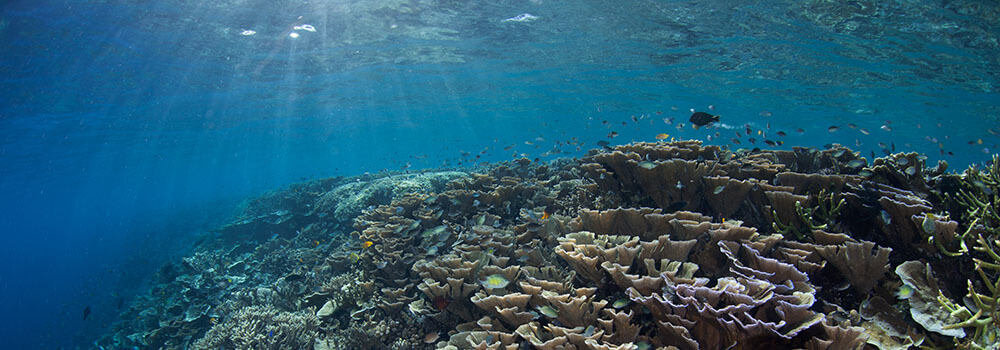
Biodiversity part three
Biodiversity part three. The third and final part of this blog on focuses on nutrient recycling and the Energy-Stability-Area hypothesis to further explain why the Coral Triangle has the highest levels of marine biodiversity in the world.
Nutrient recycling
The recycling of organic material by sponges, fishes, corals, worms, sea cucumbers, microbes, algae, and countless other marine creatures, is of great importance for retaining energy and nutrients within a marine food web. In order to sustain elaborate food webs, primary producers (microscopic plants and bacteria, collectively known as phytoplankton) in the Coral Triangle must make the most from a world in short supply of key nutrients, often adopting remarkable strategies to achieve these goals. For instance, the mutualistic symbiosis between zooxanthellae and various reef-associated animals, such as sponges, corals, and nudibranchs, significantly increases the quantity and efficiency of energy transfer. As an example, it has been suggested that the close association between damselfishes and staghorn corals benefits the coral in the form of waste excreted by the damselfishes. The waste is rich in otherwise scarce nutrients such as nitrogen and phosphorus, important for the health and growth of the coral and its symbiotic algae, zooxanthellae. This kind of relationship may also be shared between anthias and cardinalfishes and the branching corals with which they intimately associate. To wit, frugality in the Coral Triangle is critical for generating and supporting such high levels of biodiversity and abundance.
Energy-Stability-Area
The Energy-Stability-Area (ESA) hypothesis proposes that areas exposed to high amounts of sunlight (energy) in combination with consistently stable environments (stability), complimented by a large area (area), invariably possess high levels of biodiversity.Taken in parts, an area with high amounts of sunlight promotes the population growth of primary producers. As the primary producers are the keystones of the food web, the more primary producers there are, the more food is available throughout the food web. Stable environments allow species to compete without the influence of environmental change. For example, in areas where seasons fluctuate between warm, sunny days, and cold, cloudy days, organisms must be able to adapt to both scenarios. Those that cannot adapt will ultimately perish due to limited space and resources consumed by those that can. This results in fewer species as the ones that can adapt fill larger, general niches. In environments where temperature and sunlight are relatively consistent throughout the year, the large environmental variable is muted. Species must focus on specialized niches as the range of competition shifts to narrower parameters specific to particular habitats. Finally, a larger area will have a greater diversity of habitats and niches, thus supporting a higher number of species.
In the end, marine biodiversity, especially within the Coral Triangle, is truly the result of countless factors. The incredible range of life, running the gamut of nearly all known marine phyla, makes exploring this area one of the greatest earthly adventures a person can undertake. Thanks for making all the way to biodiversity part three :-)!


